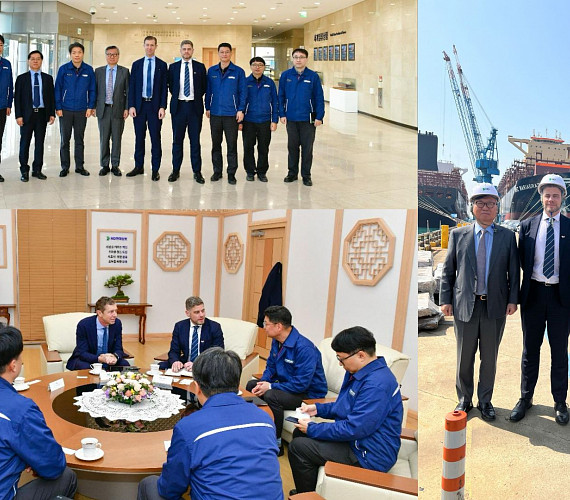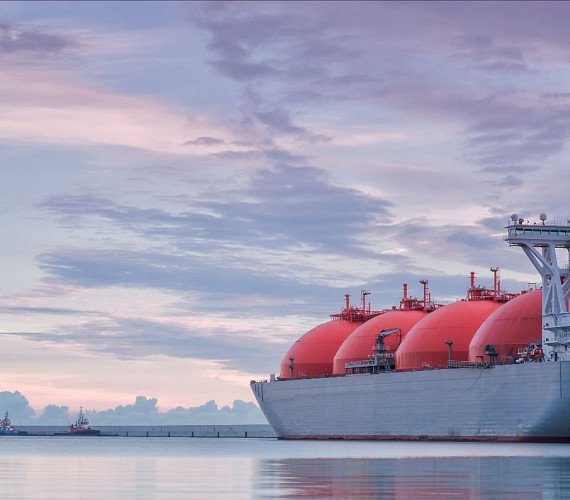Air lubrication & the Silverstream® System: proven clean technology helping to meet shipping’s decarbonisation challenge
The shipping industry faces an urgent need to decarbonise, whilst remaining profitable, in the coming years. International Maritime Organisation targets for 2030 and 2050, alongside growing pressure from across the supply chain, is creating new pressures for owners and operators to embrace efficiency.
It is imperative that we begin to make the transition now. As we all know, shipping is a capital constrained market with a focus on reducing costs. That is why it is important that the sector amplifies the fuel (and therefore cost) savings potential of efficiency solutions, creating a dual argument for profitable decarbonisation.
Due to economic and societal factors, an immediate and widescale green transformation is not possible or feasible, and at present there exists no one singular solution. However, shipowners are becoming increasingly inclined to seek proven, fuel agnostic clean technology to optimise efficiency, reduce emissions and to start their journey to zero emissions.
Today we explore one of these clean technologies – air lubrication – and understand, from the perspective of clean tech market leaders Silverstream Technologies, why they believe their Silverstream® System to be such a powerful motivator in industry change.
The principles of air lubrication technology
To understand how the Silverstream® System works, it is first important to understand air lubrication. Although it is not a new concept, having been described by English scientist William Froude in the 1800s and trialled at various points during the 20th Century, the technology has advanced in its applicability and effectiveness.
Fundamentally speaking, air lubrication uses the natural phenomenon of water and air moving past each other, taking advantage of their natural turbulence to create a thin layer of bubbles in the boundary layer between the two materials. This layer of microbubbles coats the full flat bottom of a vessel’s hull, reducing frictional resistance. Frictional resistance is a huge component of ship power requirements – with 70% of engine load required to overcome it – therefore any savings here can have massive fuel and cost benefits.
The Silverstream® System
Now that the fundamentals of air lubrication are understood, we can talk about the differences of the Silverstream® System compared to competitor technologies.
The key differences with Silverstream’s technology are twofold. Firstly, the company uses air release units – a sea chest welded between the double bottom of the hull – in an arrowhead formation to create the bubble carpet. Importantly, efficiency savings are maximised because Silverstream spend no power forcibly extruding air into the boundary layer, which is the second key difference. Silverstream take advantage of a hydrodynamic interaction called shearing, the same phenomenon that causes white caps on waves, to reduce the power cost of creating the microbubble carpet.
This means that savings for the owner and operator are maximised, with less power spent generating the bubble carpet than the engine load that it reduces. Generally, this means that fuels savings come in the range of 5-10% depending on vessel characteristics.
Silverstream have worked hard to prove these savings with a range of third parties, including Lloyd’s Register, Shell, HSVA and the University of Southampton.
The Silverstream® System is unique in its measurability – an instant drop in shaft power can be observed when the System is activated. This on/off nature allows for fine tuning of the technology and constant measurement; evaluation and improvements can be made to how the system runs maximising efficiency gains across a vessel’s full lifecycle.
Silverstream has been uncompromising in its pursuit of proving the benefits of the Silverstream® System with rigour, industry-wide collaboration and transparency, and thereby helping to dispel scepticism in the shipping industry’s clean technology market.
Shipping’s decarbonisation challenges need bold solutions. Silverstream led this charge with a new way of thinking about efficiency, proving to the market that technologies can help an industry beset by political and public scrutiny, volatile fuel prices and regulatory uncertainty.
The Silverstream process
Most typically, the process of installing a System commences with an evaluation of the project, in which customers are provided with an assessment of the savings across a range of speeds and for ballast and laden conditions. The evaluation methodology was developed using research carried out with HSVA and from comprehensive testing data obtained over a 2-year period of system operation.
Following the proposal phase, naval architects work to understand how the technology will fit into newbuilds or in retrofit applications. After design approval, equipment delivery will be confirmed.
Silverstream engineers will be present throughout a retrofit installation in dry dock and at key installation stages for a new build project. Installation timelines vary depending on the duration of a dry dock or new build programme. In some circumstances it will be possible to complete the installation within 10 days.
The System is then commissioned with optimisation carried out once the vessel is at sea. As part of this process, crew training is be provided to ensure maximum savings potential in the future.
Working with the best
On principle, Silverstream is committed to working with the very best in the shipping industry to drive uptake. This means working with the blue-chip organisations within each of shipping’s many market segments, including dry bulk, tankers, LNG, container shipping, cruise and more.
Shipping is an industry filled with willing participants, but not many first movers and therefore needs a thriving landscape of clean technologies to meet its emission goals. To achieve this ecosystem of complimentary clean technologies, Silverstream will continue to reinforce the power of proven claims to help to drive uptake – and will work with the best non-owner partners to help create complimentary offerings and packages including the Silverstream® System.
Silverstream has built a diverse team of maritime industry experts, engineers, naval architects and innovators. Now moving beyond “start-up”, Silverstream is an excellent example of a strong, growing maritime business – and a pioneering UK clean technology manufacturer.
Current installations & agreements
Silverstream has realised significant commercial uptake with three in-service installations with thousands of in-operation hours, spanning multiple vessel classes, as well as a robust commercial pipeline. These include orders on the Norwegian Joy, Diamond Princess and across a series of Grimaldi Group 5th Generation Ro-Ro vessel designs.
Silverstream’s strong pipeline of orders for its system – totalling an approximate £50,000,000 – on both retrofits and newbuilds, comes from some of the leading names in the sector. The list includes Maersk, MSC, Shell, Grimaldi, Hyundai Heavy Industries, Carnival, Vale and others. As a result of this accelerated success, Silverstream is now targeting 500 installations of the Silverstream® System by 2025.
Additionally, Silverstream wants to work with the best yards and other service partners around the world. Memoranda of Understanding have been signed with key Chinese shipyards including Hudong-Zhonghua and SWS, to supply the Silverstream® System in key locations in one of the world’s biggest shipbuilding nations.
Silverstream has also signed a License and Co-operation Agreement with Wärtsilä for future sales, servicing and support of the Silverstream® System. This allows Silverstream’s customers to tap into and benefit from Wärtsilä’s global service network.
As an authorised sales and service partner, Wärtsilä will fully integrate Silverstream’s air lubrication system within its propulsion solutions. By offering the Silverstream® System as an integral part of Wärtsilä’s propulsion solution for newbuild vessels, compliance with the Energy Efficiency Design Index (EEDI) will be further improved.
Under the agreement, the Silverstream® System will also be available through Wärtsilä’s sales channels for retrofit installations on existing vessels where Wärtsilä is a primary solutions provider. The integrated Silverstream® System is expected to realise synergies in capital and operational savings across the propulsion chain by increasing fuel efficiency and optimising engine loading.
This new collaborative partnership will accelerate the deployment of air lubrication systems across all vessel classes, from small bulk vessels to the largest container ships. By combining Wärtsilä’s propulsion expertise and Silverstream’s innovative engineering knowledge, access to the technology will be facilitated across the market.
Looking forward
To meet its decarbonisation targets, the shipping industry must embrace a range of advanced fuels and clean technologies. As shipping’s first truly proven air lubrication technology, and with increasing uptake across all market segments, Silverstream is optimistic for the future of our sector; a future that is smarter, greener, economically and environmentally sustainable and enabled by radical innovation and fresh mindsets.
Link to the publication (p. 48)



